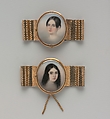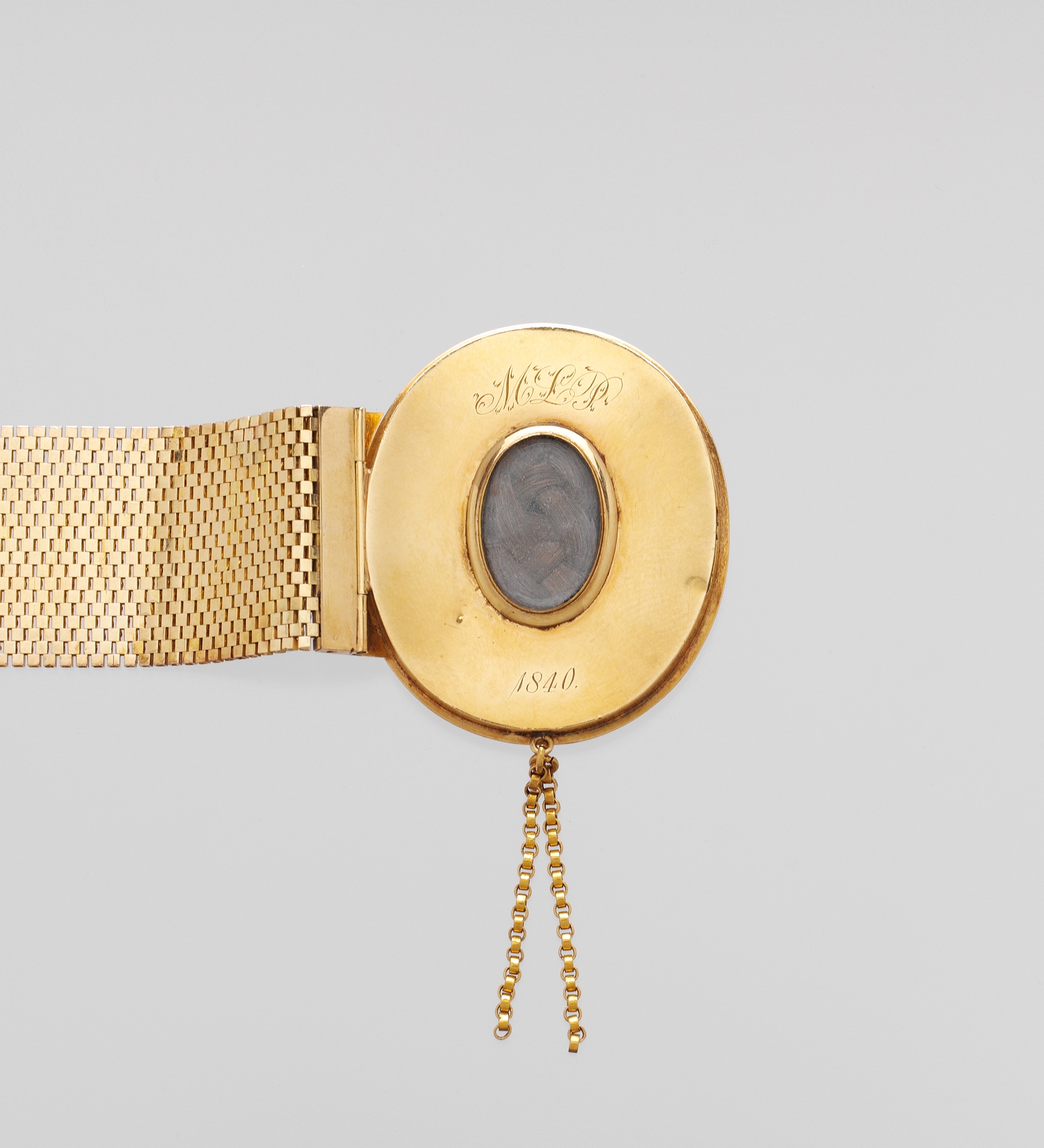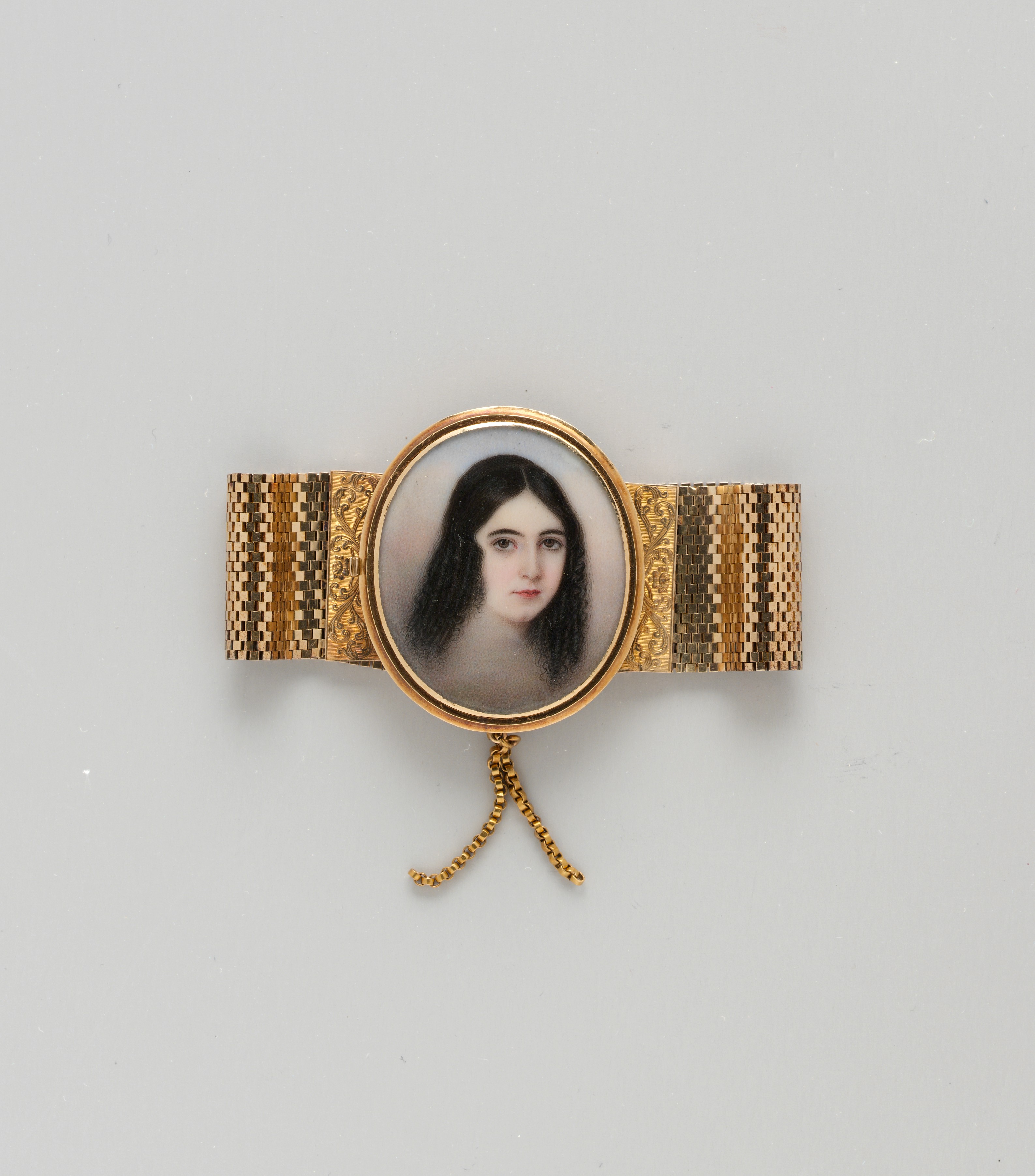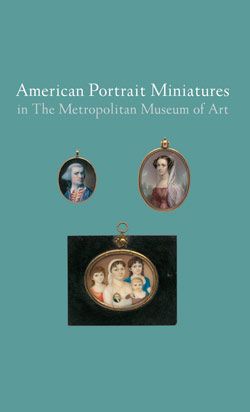Pair of Bracelets
Painted by John Carlin American
Not on view
These matching bracelets are made of 14-karat yellow gold and have wide chain-link bands engraved with flowers at the terminals. The clasps are set with portrait miniatures on ivory of two young women, presumably sisters, painted by American artist John Carlin. The reverse of each clasp is a locket, which holds a braid of the sitter’s hair beneath a crystal face. One miniature depicts a young woman with dark hair, smoothly coifed across the crown of her head with a center part and falling in ringlets to her shoulders. She is portrayed in a head and neck format, turned to the proper left, with a modulated background simulating clouds. The reverse of this portrait is engraved with the initials "MLP" and the date "1840." The second portrait shows a young woman with dark hair smoothly coifed across the crown of her head with a center part draped in front of her ears and pulled back. Like her sister, she is portrayed in head and neck format, and in a similar cloud setting. The reverse of this portrait is engraved with the initials "CAP" and the date "July 1840" on the reverse. The identities of these sitters remains unknown.
John Carlin, a deaf mute, was born in Philadelphia and graduated from the Pennsylvania Institute for the Deaf and Dumb. At school he proved himself a talented painter. He went on to study with John Rubens Smith and John Neagle of Philadelphia before going to Paris to study with the academic master Paul Delaroche. Upon his return to the United States Carlin settled in New York, becoming one of the city’s most sought after miniaturists. Carlin was also a genre and landscape painter, a writer, and a poet.
Due to rights restrictions, this image cannot be enlarged, viewed at full screen, or downloaded.
This artwork is meant to be viewed from right to left. Scroll left to view more.











